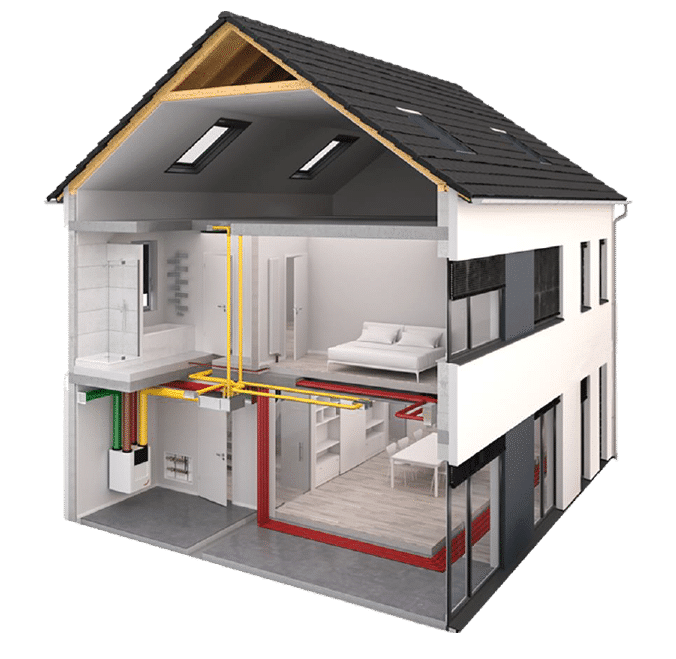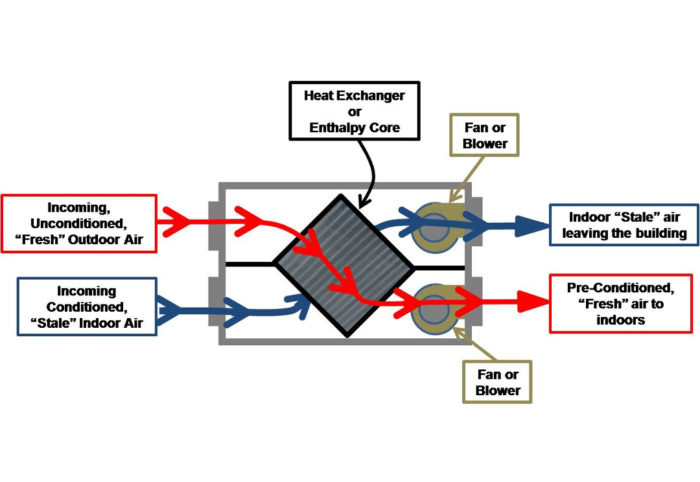HRV Selection Guide: What Features to Consider
Just How Heat Recovery Ventilation Boosts Indoor Air High Quality and Reduces Power Prices
Heat Recovery Ventilation (HRV) systems play an essential duty in improving interior air quality while at the same time lowering power costs. By effectively trading stale indoor air with fresh outdoor air, HRVs aid preserve suitable moisture and decrease toxins. Additionally, their capability to recoup warmth from outbound air lessens the pressure on home heating and cooling systems. As power prices continue to rise, comprehending the complete capacity of HRV systems becomes significantly essential for property owners and organizations alike.
Understanding Heat Recovery Ventilation Equipments

Heat recovery ventilation (HRV) systems play an important role in boosting interior air quality, especially in contemporary, energy-efficient buildings. These systems are designed to transfer warmth from the outgoing stagnant air to the inbound fresh air, thus reducing energy loss while preserving ideal temperature degrees inside. HRVs include a heat exchanger, followers, and ductwork, facilitating the continual flow of air. By removing indoor toxins and presenting fresh air, HRVs aid to balance moisture levels, prevent mold and mildew growth, and reduce irritants. The effectiveness of HRV systems lies in their capability to recoup up to 80% of the warmth from the tired air, promoting power preservation while guaranteeing a healthy interior environment. Their combination is important in accomplishing lasting living methods.
The Relevance of Indoor Air Quality
Indoor air quality (IAQ) is an important aspect affecting the health and wellness and health of owners in any setting. Poor IAQ can result in various health and wellness issues, including respiratory system problems, allergic reactions, and tiredness. Furthermore, it can exacerbate status quo such as asthma. Aspects adding to low IAQ consist of toxins from interior sources like cleansing agents, mold, and inadequate air flow. Preserving good IAQ is crucial for advertising a risk-free and comfy living or functioning space. Effective methods to improve IAQ include normal surveillance of air top quality, appropriate air flow systems, and decreasing making use of unsafe materials indoors. By focusing on IAQ, people can guarantee a much healthier setting that fosters productivity and total lifestyle.
Power Effectiveness Advantages of HRV Systems
Several property owners and building supervisors are significantly identifying the energy efficiency advantages of warm healing ventilation (HRV) systems. By moving heat from exhausted indoor air to inbound fresh air, HRV systems considerably reduce the energy needed for cooling and heating. This procedure lessens dependence on standard cooling and heating systems, leading to reduced power expenses. Furthermore, HRVs help preserve a balanced indoor climate, stopping excessive home heating or cooling down demands. The capacity to recuperate up to 90% of the warmth from outward bound air likewise supports sustainability initiatives by lowering overall power consumption. HRV systems add not just to set you back financial savings but also to a decreased carbon impact, lining up with the expanding focus on energy-efficient building techniques.
Installation and Upkeep Considerations
The reliable implementation of warm recuperation air flow (HRV) systems calls for careful consideration of installment and upkeep aspects to assure peak performance. Correct positioning of the HRV system is crucial, as it needs to be set up in an area that takes full advantage of air flow while reducing noise disruption. In addition, ductwork needs review to be suitably sized and shielded to protect against energy loss. Regular maintenance, including filter substitute and system cleansing, is critical to safeguard optimum capability and interior air high quality. Proprietors must establish a routine maintenance timetable to identify and deal with possible problems before read the article they escalate. Partnership with seasoned specialists during both installment and upkeep stages can improve the long life and effectiveness of HRV systems, ultimately causing much better interior environments and lowered power expenses.
Real-World Applications and Success Stories
Checking out real-world applications of heat recuperation ventilation (HRV) systems discloses their significant influence on indoor air high quality and energy performance throughout numerous setups. In residential structures, home owners have reported improved air top quality, causing less allergies and breathing issues. Schools implementing HRV systems have actually kept in mind improved student focus and lowered absence because of much better air flow. Business buildings, such as offices and retail spaces, have actually experienced lower power expenses and raised staff member efficiency. A company office in a warm climate achieved a 30% reduction in power expenses after setting up an HRV system. These success stories show that HRV technology not just adds to much healthier atmospheres however additionally gives concrete economic advantages, making it a useful investment for different fields.
Often Asked Questions
Can HRV Solutions Lower Irritants in Indoor Air?
The efficiency of HRV systems in minimizing indoor allergens mostly rests on their ability to filter and exchange air. HRV Heat Recovery Ventilation. By constantly changing stagnant air, these systems can significantly decrease irritant degrees throughout interior settings

Exactly How Does Moisture Affect HRV System Efficiency?
Humidity greatly affects HRV system efficiency; high degrees can lead to condensation, reducing performance, while reduced moisture might try this site enhance air exchange. Balancing moisture is necessary for excellent operation and preserving interior air quality.
Are HRV Systems Noisy During Operation?
HRV systems can produce varying noise degrees throughout operation, depending upon their design and installment. Some units run silently, while others might create noticeable noise, specifically at greater air flow setups or when inadequately maintained.
What Is the Ordinary Life-span of an HRV System?

Can HRV Equipments Be Used in All Climates?
HRV systems can be used in various environments, however their efficiency may differ - HRV Heat Recovery Ventilation. In extreme temperature levels, changes or supplementary systems may be essential to ensure excellent efficiency and comfort while preserving indoor air top quality